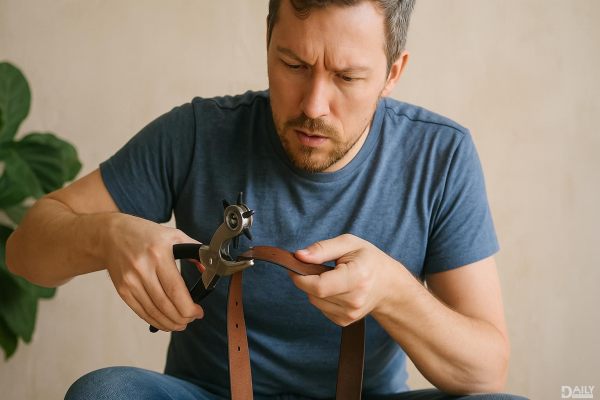Got a belt that's suddenly too tight? Maybe you’ve been hitting the gym hard (or maybe those weekend burgers are catching up), and now your trusty belt won’t buckle without cutting off your circulation. Don’t toss it just yet—you can totally add a new hole without wrecking it. Whether it’s leather, faux leather, or fabric, we’ve got the lowdown on how to DIY this like a pro.

Before you start stabbing holes willy-nilly, gather the right gear. For leather belts, a rotary punch or a sharp awl is your best bet. If you’re working with fabric or thinner materials, a small nail and hammer might do the trick. And if you’re in a pinch? A heated metal skewer or even a sturdy paperclip can work in a crisis (just don’t blame us if it’s not perfect). Pro tip: Lay down a cutting board or scrap wood to protect your table—no one wants accidental battle scars on their furniture.
Measure twice, punch once. Wrap the belt around your waist (or wherever you wear it) and pinch where you need the new hole. Use a ruler to space it evenly with the existing holes—wonky spacing looks janky. A dot from a marker or a tiny scratch with a knife will keep you on target. If your belt has decorative stitching, avoid punching through it unless you want a "custom distressed" look (and not in a good way).
Leather’s tough, so brute force won’t cut it. A rotary punch lets you crank a clean hole without fraying edges. No punch? Grab an awl or even a drill bit slightly smaller than your buckle’s pin. Twist it slowly while pressing down—no power tools unless you’re very confident. For ultra-thick belts, a dab of leather conditioner around the hole prevents cracking. And if you mess up? A dab of superglue on frayed edges can salvage things (just let it dry before wearing).
These are way easier. A heated nail (hold it with pliers over a flame for 10 seconds) melts through synthetic materials cleanly. For woven fabric belts, burn the edges lightly with a lighter to stop unraveling—just don’t torch the whole thing. No heat? Sandwich the belt between two boards and hammer a nail through; the pressure keeps the fabric from tearing unevenly.
New holes can weaken the belt over time, especially if it’s cheap leather. Rubbing a bit of beeswax or clear nail polish around the edges seals the deal and prevents stretching. For fabric belts, a drop of fabric glue keeps threads in check. And if you went overboard with holes? Time to admit defeat and treat yourself to a new belt—your future self will thank you.
There you go—no more sucking in your stomach just to buckle up. With these tricks, your belt gets a second life, and you get to breathe easy (literally). Now go forth and conquer that waistband rebellion like the MacGyver of accessories.
























